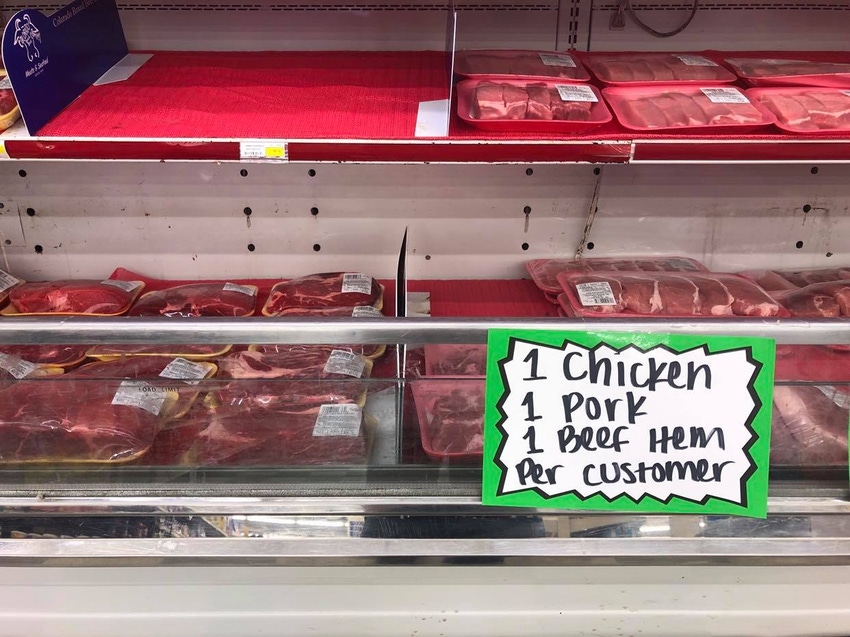Pandemic highlighted many vulnerabilities, including need for additional transparency and integration in food supply chain.

Despite many setbacks and challenges in the supply chain, the U.S. food system performed incredibly well during the COVID-19 pandemic, Patrick Criteser, president and chief executive officer of Tillamook, said during a Reuters virtual event that focused on the food chain. Still, it was obvious that the supply chain was rigid in some places, highlighting the need for additional transparency and integration. Additionally, many food and agriculture companies continue to face challenges as they navigate supply chain changes, evolving consumer behavior and organizational changes.
“This COVID situation was certainly a useful exercise in risk assessment and reaction, I think, across the supply chain,” Criteser said. “We responded well early in terms of building inventory, in terms of laying out plans for changing practices in our plants to keep our people safe and to keep our operations running.”
He said his company even negotiated with state, local and, in some cases, federal authorities to ensure that they were all on the same page to keep operations running if COVID-19 cases started to rise in employees.
Even as Tillamook put plans together, Criteser said it became evident that an interruption in the supply of even a small ingredient, like salt or packaging or hand sanitizer, could shut down an operation.
“It really emphasized the interdependency and the risk associated with the interdependency that we have on various suppliers and then downstream as well,” he added.
For Tillamook, Criteser said the events helped the company learn about doing a better job of anticipating various risks, particularly around the supply chain, contingency planning and developing deeper relationships with supply chain partners.
He further stated that during the COVID-19-related meat packing plant challenges, a narrative emerged: “We can either supply food or keep people safe.” The industry needs to approach these risk situations in a way that allows both, he emphasized.
Overall, Criteser said a more integrated, resilient supply chain with deep partnerships is needed so there is flexibility in the system.
Todd Putman, executive vice president and chief growth officer of Bumble Bee, also shared insight during the event, noting that his company is hyper-learning almost every single day about a new challenge and how to adapt.
For Bumble Bee, communication has become a particular challenge as the COVID-19 situation forced many internal changes, including remote working.
“It feels like the culture is fraying,” he said. “We’re very worried about connectivity and connection points and culture and relevancy among individuals as a major risk factor.”
If collaboration goes away, Putman said, “eventually innovation will go away; eventually new ideas [and] new solutions will go away. That’ a huge risk to our organization, we feel like.”
Putnam said prior to COVID-19, Bumble Bee had a huge innovation pipeline.
New ideas for the company’s consumers and customers are critical; “otherwise, we’re just not going to accelerate where we need to go in terms of availability, affordability and accessibility of fantastic food,” he said.
Chris Terris, president of agriculture-Canada for Telus, said COVID-19 has created an accelerated digital economy around the world, yet the agriculture and food industries remain very physical in nature.
“I think we have to really focus on building the bridge between the digital economy and food and agriculture, and that starts with digitizing what we do with the industry today,” Terris said.
Zippy Duvall, president of the American Farm Bureau Federation, also weighed in on the discussion, noting that while the food chain didn’t break down, it has slowed down. “If you slow things down to do a better job at protecting employees, slowing it down adds a lot of cost to it,” he pointed out.
This could mean higher prices for consumers in the grocery store, Duvall warned.
“There are risks to trying to mitigate the problems that come along with the food chain being interrupted,” he added.
Also, while the U.S. is still kind of in the middle of this storm, he said it’s hard to evaluate what needs to be done to offset the downside of the storm.
“I think at the end of this pandemic, as the industry supply chain, we’ll be evaluating what we did right, what we did wrong, what we can do better and be better prepared next time.” Duvall said.
He said this was the first time in his lifetime that people went to the grocery store and found empty shelves, but “it wasn’t because of lack of food; it wasn’t because farmers weren’t still farming.”
As such, the Farm Bureau started a hashtag “#stillfarming” that reached 92 million people in America, one-third of the population.
“We have an opportunity to tell them our story,” he said of the general public. “Really and truly, we’ve talked about food being a national security issue in our country over the years, and it’s never made a connection. It’s making a connection now.”
During the pandemic, Duvall said empty shelves made people think about how they were going to feed their families.
“What country is going to feed us if our farmers aren’t growing it? Even in the pandemic, there is still a silver lining,” he said.
About the Author(s)
You May Also Like



.png?width=300&auto=webp&quality=80&disable=upscale)

